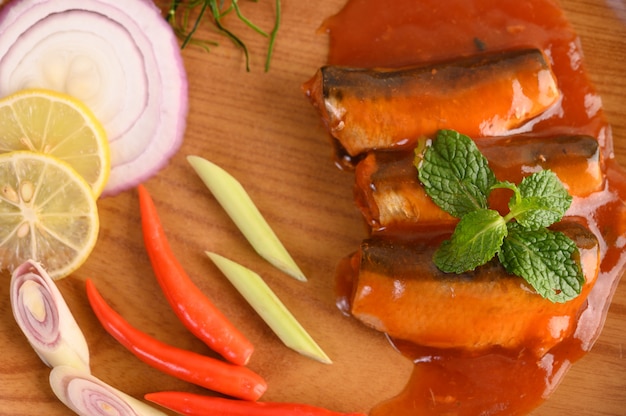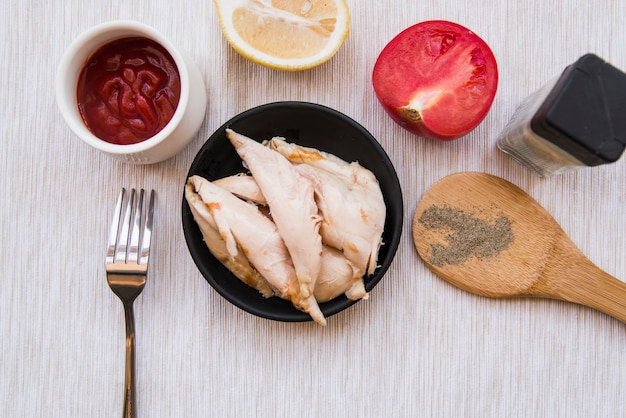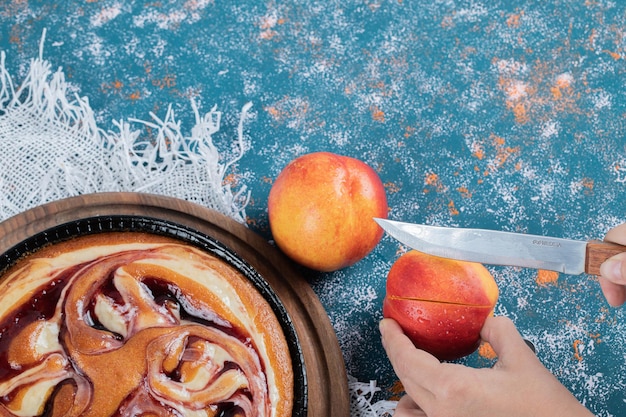Ah, snow crab. Those vibrant, scarlet-shelled beauties with their delicate, sweet meat that just melts in your mouth? For years, I've been a bit of a seafood snob. I mean, I'm a Brit, we're surrounded by the stuff! But there's something about snow crab that really gets my taste buds tingling. The anticipation of cracking open those claws, the satisfying snap as the shell gives way, the sheer joy of that first juicy bite… It's a culinary symphony, I tell you.
Now, I'm not going to pretend I've always been a culinary master. I've had my fair share of kitchen disasters, like those dry, rubbery crab legs that make you question your life choices. But, over time, I've learned a thing or two, and I'm here to share my hard-earned wisdom. Whether you're a seasoned pro or just starting your seafood journey, this step-by-step guide will help you cook snow crab like a boss.
(Part 1) choosing the right crab

The first step, the most crucial step, is selecting your crab. You want to go for fresh, live snow crab. They're usually available at your local fishmonger or supermarket, sometimes even at farmers markets. Just make sure you ask the right questions.
The Importance of Freshness
Let me tell you, there's a world of difference between fresh crab and crab that's been sitting around for a bit. Fresh crab is a symphony of flavour, while the other…well, let's just say it's a bit of a culinary tragedy.
How to Tell if a Crab is Fresh
Don't be shy, get close and personal with those crabs! Check these key indicators:
- The Eyes: Fresh snow crab should have bright, shiny black eyes that sparkle like a disco ball. Avoid any with cloudy, dull eyes, as this could indicate they're not so fresh. It's like looking at a disco ball that's lost its mojo.
- The Shell: The shell should be hard and smooth, with no soft spots, like a well-maintained car. A firm shell means the crab is healthy and hasn't been sitting around for too long.
- The Weight: A good rule of thumb is to choose a crab that feels heavy for its size. This means it’s got plenty of meat inside, like a well-stuffed Christmas stocking.
- The Smell: A fresh snow crab will have a faint, briny scent, reminiscent of a refreshing sea breeze. If it smells fishy or ammonia-like, steer clear! It's like a bad perfume – it's just not right.
If you’re buying live crab, they should be lively and active. Don’t be afraid to give them a gentle nudge; they should scurry away quickly, like a kid trying to avoid their chores.
(Part 2) Prepping the Crab

Once you’ve got your gorgeous crabs, it’s time to get them ready for cooking. Don’t worry, it’s not as daunting as it sounds. Just a few simple steps and you'll be on your way to culinary glory.
Cleaning Your Crab
The first thing you want to do is clean them. It’s a good idea to rinse them under cold water to remove any dirt or debris. Use a stiff brush to scrub the shell, especially around the legs and the underside.
Imagine your crab as a tiny, armored warrior. Give them a good scrub to make sure they're battle-ready for the kitchen.
Removing the Band
You’ll notice a rubber band tied around the crab’s claws. This band is used to keep the claws closed during transport. It’s important to remove this before cooking. You can do this by cutting it with a pair of scissors.
Think of this band as a little prison guard for the crab's claws. Free them so they can unleash their deliciousness!
Ready to Cook
Your crab is now prepped and ready to cook. You can steam, boil, or even bake them. I’ll walk you through each method in detail, giving you all the tools you need to become a snow crab master.
(Part 3) Steaming Your Snow Crab

For a lighter, more delicate flavour, steaming is the way to go. It’s also a good option if you’re worried about overcooking the crab, like a nervous parent with a first-time driver.
What You Need
- Large steamer basket
- Large pot with lid
- Water
- Lemon wedges (optional)
- Fresh herbs (like dill or parsley, optional)
- Salt
Imagine the steamer basket as a luxurious spa for your crab. It's where they'll get pampered with steam and flavour.
The Process
1. Fill the pot with about an inch of water. Bring it to a boil over high heat.
2. Add the lemon wedges and herbs to the boiling water if using. These will add a lovely aroma and flavour to the crab, like a touch of perfume to a beautiful outfit.
3. Add the crabs to the steamer basket, making sure they’re not crowded.
4. Place the steamer basket on top of the boiling water. Cover the pot and reduce the heat to a simmer.
5. Steam the crabs for about 15-20 minutes, or until the shells turn a bright red. Larger crabs may need a bit longer, like a marathon runner taking their time.
6. Remove the crabs from the steamer basket and let them cool slightly before serving.
(Part 4) Boiling Your Snow Crab
Boiling is a classic method for cooking crab, and it’s super simple. It's the method I used to use back in the day, before I discovered the joys of steaming and baking.
What You Need
- Large pot
- Water
- Salt
- Lemon wedges (optional)
- Fresh herbs (like dill or parsley, optional)
Think of the boiling water as a bubbling hot tub for your crab. It's all about creating a delicious broth to flavour the meat.
The Process
1. Fill the pot with enough water to cover the crabs. Add salt to the water, about a tablespoon per gallon.
2. Bring the water to a rolling boil. Add the lemon wedges and herbs if using.
3. Carefully add the crabs to the boiling water. The water should return to a boil quickly.
4. Reduce the heat to a simmer and cook the crabs for 10-15 minutes, or until the shells turn a bright red. Again, bigger crabs might take a little longer, like a big project that requires more time.
5. Remove the crabs from the pot and let them cool slightly before serving.
(Part 5) Baking Your Snow Crab
Okay, now this is where things get a bit more adventurous. Baking your snow crab adds a delicious, smoky flavour. It's not the traditional way to cook crab, but believe me, it's a real winner.
What You Need
- Baking sheet
- Aluminum foil
- Butter
- Lemon wedges (optional)
- Fresh herbs (like dill or parsley, optional)
- Salt
- Black pepper
- Garlic (optional)
Think of the oven as a fiery stage for your crab, where they get a delicious smoky makeover.
The Process
1. Preheat your oven to 400°F (200°C).
2. Lay out a sheet of aluminum foil on the baking sheet. Place the crab on top of the foil.
3. Add a pat of butter on top of each crab and a squeeze of lemon juice. Season with salt, pepper, and add minced garlic if you like.
4. Fold the foil over the crabs to create a sealed packet. This will help trap the steam and keep the crab moist.
5. Bake the crabs for 20-25 minutes, or until the shells are bright red and the meat is cooked through.
6. Remove the crabs from the oven and carefully open the foil packets. Let them cool slightly before serving.
(Part 6) Serving Your Delicious Snow Crab
Now for the fun part! You’ve cooked your crab beautifully, and it's time to enjoy the fruits of your labour.
The Tools
You’ll need a few tools to crack open your snow crab and get to that delicious meat.
- crab cracker: This handy tool is designed to crack open the claws and legs of the crab, like a tiny knight's sword.
- Crab pick: A crab pick is used to remove the meat from the shell, like a delicate ballet dancer.
- Serving plate: This is where you’ll display your masterpiece, like a museum showcasing a work of art.
- Napkins: You’ll need plenty of napkins! You'll be surprised how much crab you can get through.
The Feast
Here’s the beauty of snow crab: it's fantastic on its own! You can enjoy it simply with melted butter, lemon wedges, and maybe a dash of salt and pepper. But if you want to get fancy, you can serve it with a variety of dips.
Some Dip Ideas
- Cocktail sauce: Classic and always a crowd-pleaser, like a popular song everyone loves.
- Garlic butter: A rich and flavourful dip that goes perfectly with snow crab, like a warm hug on a cold day.
- Lemon herb butter: A light and refreshing dip that adds a citrusy twist to the crab, like a summer breeze.
- Spicy mayo: For those who like a little heat, this dip is sure to please, like a good mystery novel.
Don’t forget to serve your snow crab with a side of your favourite beverage. A crisp white wine, a cold beer, or even a refreshing iced tea will complement the flavours of the crab beautifully.
(Part 7) Cracking Open the Crab
Now, let’s get down to the nitty-gritty. It’s time to crack open that shell and get to the good stuff.
The Claws
The claws are where you’ll find the biggest and most delicious pieces of meat. Start by placing a claw on your cutting board. Use the crab cracker to crack open the claw near the joint. You might need to crack it a few times to get it open, like a safe that needs a bit of persistence.
Once the claw is open, use the crab pick to remove the meat from the shell. You might need to pull the meat out in small pieces, like unwrapping a gift.
The Legs
The legs are smaller than the claws, but they still contain delicious meat. Use the crab cracker to crack open the legs. You might need to use the crab pick to pry the meat out of the legs, like a detective looking for clues.
The Body
The body of the crab also contains some meat, although it’s not as much as in the claws and legs. You can crack open the body with the crab cracker, or you can simply pull the shell apart with your hands.
The meat inside the body is usually softer and more delicate than the meat in the claws and legs, like a delicate whisper.
The Tomalley
Now, for those adventurous souls, there’s the tomalley. It’s the green, creamy paste found in the body of the crab. Some people love it, while others find it too strong. It’s a matter of taste.
If you want to try it, scoop it out with a spoon and spread it on some bread or crackers. It's rich and slightly bitter, and adds a complex flavour to your meal.
(Part 8) Storage and Leftovers
Right, you’ve enjoyed your feast, but what about leftovers? No need to despair. Snow crab is surprisingly good for leftovers, like a good book you can revisit.
Storing Your Crab
If you have any leftover cooked crab, it's best to store it in the fridge.
1. Let the crab cool down completely, like a hot engine needing time to rest.
2. Remove any meat from the shell and store it in an airtight container.
3. Store the container in the refrigerator for up to 3-4 days.
Using Your Leftovers
You can use leftover snow crab in a variety of dishes, like a versatile actor playing many roles.
- Crab salad: Combine the crabmeat with mayonnaise, celery, onion, and your favourite seasonings.
- Crab dip: Mix the crabmeat with cream cheese, sour cream, and spices. Serve with crackers or bread.
- Crab omelets or frittatas: Add some crabmeat to your favourite egg dish.
- Crab pasta: Toss cooked crabmeat with your favourite pasta sauce and pasta.
- Crab pizza: Top your pizza with crabmeat and your favourite toppings.
(Part 9) Variations and Tips
Now, I’ve shown you the basics. But cooking is all about creativity, right? So let's add some extra flavour and fun to your snow crab journey.
Adding Flavour
- Lemon and Herb Butter: This is a classic for a reason. It adds a fresh and zesty touch, like a refreshing summer cocktail.
- Garlic Butter: If you love garlic, you’ll adore this rich and flavourful butter, like a comforting hug.
- Spicy Butter: For those who like a kick, add some chili flakes or cayenne pepper to your butter.
Extra Tips
- Don't Overcook: Overcooked crab will be dry and tough, like a stale cookie.
- Let It Cool: Let the crab cool slightly before serving. It will make it easier to crack open the shell, like a warm loaf of bread needing time to cool.
- Use Your Hands: Don’t be afraid to get your hands dirty! It’s part of the experience, like playing in the sand at the beach.
- Enjoy the Experience: Cooking and eating snow crab is a special occasion. Relax, enjoy the company of friends and family, and savor every bite.
FAQs
1. What’s the best way to store leftover snow crab?
Store leftover snow crab in an airtight container in the refrigerator for up to 3-4 days. It’s best to remove the meat from the shell before storing, like keeping your belongings organized.
2. Can you freeze snow crab?
Yes, you can freeze snow crab. To freeze cooked crab, let it cool completely, then store it in a freezer-safe container or bag. It can be frozen for up to 3 months, like putting a treasured memory in a time capsule.
3. What’s the difference between snow crab and king crab?
Snow crab and king crab are both delicious, but they have some key differences. Snow crab is smaller and has a sweeter, more delicate flavour, like a whisper of sweetness. King crab is larger and has a more robust flavour, like a strong voice.
4. Is snow crab good for you?
Snow crab is a good source of protein, omega-3 fatty acids, and other essential nutrients. It's a healthy and delicious addition to any diet, like a nutritious and satisfying meal.
5. How do you know when snow crab is done?
Snow crab is cooked when the shells turn a bright red and the meat is opaque and firm, like a well-baked cake. You can also check the meat by inserting a fork into the thickest part of the leg. If the meat is cooked through, it will be firm and will not be pink or translucent.
That’s it, folks. A whole world of deliciousness awaits! Get your crab-cracking skills in top shape, and get ready for a culinary adventure that’s well worth the effort. Now, go forth and cook those snow crabs!
Everyone is watching

Prime Rib Roast Cooking Time Chart: Per Pound Guide
Cooking TipsPrime rib roast. Just the name conjures images of lavish dinners, crackling fires, and hearty laughter. It’s ...

How Long to Bake Potatoes in the Oven (Perfect Every Time)
Cooking TipsBaked potatoes are a staple in my kitchen. They're incredibly versatile, delicious, and surprisingly easy to m...

Perfect Rice Every Time: The Ultimate Guide to Cooking Rice
Cooking TipsAs a self-proclaimed foodie, I've always been a bit obsessed with rice. It's the foundation of countless cuisi...

The Ultimate Guide to Cooking Asparagus: Tips, Techniques, and Recipes
Cooking TipsAsparagus. The mere mention of this spring delicacy conjures up images of vibrant green spears, crisp and burs...

Ultimate Guide to Cooking the Perfect Thanksgiving Turkey
Cooking TipsThanksgiving. Just the word conjures up images of overflowing tables laden with delicious food, the scent of r...
